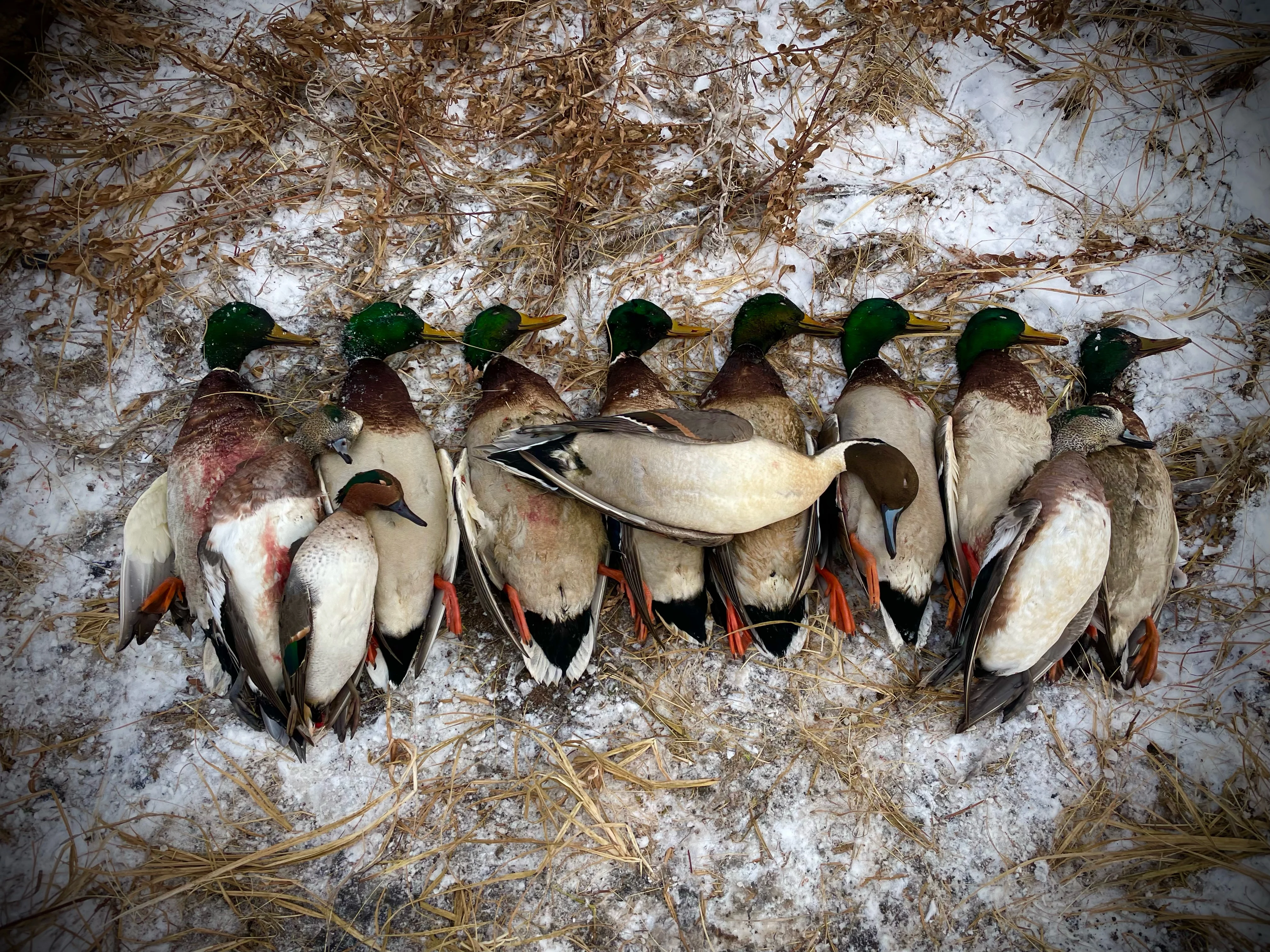Stacked loads are back. Last time around, in the 1990s, they were called “duplex” loads. They mixed two sizes of steel or two sizes of lead in turkey loads. Federal even briefly loaded a “Tri-Power” shell with three sizes of shot. Duplex loads lasted a little while, then were dismissed as novelties. Now they’re back, and for a couple of reasons.
The first is that tungsten-iron and bismuth shot are expensive. The cost of the raw shot material is what makes premium non-toxics so high-priced. One way to lower the cost of premium non-toxics is to mix it with a pinch of steel. That’s how we got the original Hevi-Metal, which combined Hevi-Shot and steel, several years ago. That’s also the thinking behind Apex TSS/Steel, Federal Black Cloud TSS, Migra stacked loads, Hevi-Metal Xtreme, and others. At the same time, stacked all-steel loads, similar to the original Duplex loads of the 90s, are back. There seems to be a sound ballistic reason behind them, too. Here's what you need to know if you're considering stacked loads for this season.

Premium Shot/Steel Blends
I’ve had a chance to shoot some of these, both at paper and at feathers. When used the right way, they can be very effective. I shot quite a bit of the old Hevi-Metal without complaint ten years ago, and while it worked, the new TSS/Steel blends I have tried pattern much better. The high density of TSS means you can mix a quarter of an ounce of TSS shot into a 1 ¼-ounce payload and come up with a lot more pellets, yet the shells remain relatively affordable.
Take the load I have shot in the field most recently, Apex TSS/Steel 2/7 ½. There are 125 pellets in an ounce of steel. Add to that the 55 pellets you get with a quarter-ounce of TSS 7 ½s, and you have a load with 180 pellets. A straight 1 ¼ ounce load of steel contains 156 pellets. So, the TSS/Steel load gives you more pellets, and the 7 ½s are at least equal in penetration to the 2s.
On the pattern board, I got 150 hits in the 30-inch circle from a Modified choke at 40 yards. That would be the equivalent of a near 100 percent pattern with a comparable load of straight steel 2s. The hits from the 2s and 7 ½s were easy to tell apart. In my tests, all 55 TSS pellets wound up inside the 30-inch circle, and most hit inside a 20-inch circle.
The laws of physics are immutable; bad things happen at longer ranges with blended loads. The more aerodynamic, denser TSS pellets outrun the lighter, bulkier steel, and the load strings out. These are not loads made for long-range shooting.
And, that brings us to the biggest misconception hunters have with these loads. Many believe “the steel is for short-range shots, and the TSS is for long shots.” Wrong. Where these loads excel is at the mid-ranges, where the TSS and steel work together to give you much higher hit-probability. At home, I shot the 2/7 ½s at ducks and a few geese that found my duck ponds with very good results.
These would be ideal loads for shooting at decoying ducks in flooded corn, which is some of the worst stuff for people and dogs to chase down crippled ducks. For long range shooting, shoot all one size of bigger shot through a tight choke.

Stacked Steel
Steel stacked loads, now offered by Kent and Remington, work differently. While the premium/steel loads have bigger steel shot on the bottom and the smaller tungsten or bismuth pellets on top, with steel, you load the smaller shot first, then layer the bigger shot on top. Kent’s Jeff Barry told me that in their testing, the then-new Fasteel + ammo produced better patterns. The smaller pellets drafted behind the bigger pellets, he claimed, like NASCAR racers drafting behind semi-trucks. The smaller shot stayed in the pattern longer, as it got a free ride behind the big pellets, which did the hard work of fighting air resistance. The result, he told me, was that the stacked steel load of, say, BBs and 2s actually put more pellets on target despite having lower pellet counts than straight 2s.
I did not say “yeah, right” out loud, but I wasn’t sure the blends would make a significant difference. It’s a good thing I kept my mouth shut because on the pattern board, the BB/2 Fasteel + ammo performed exactly as advertised. Due to the drafting effect Barry described, they put more pellets on target than straight 2s. Better yet, because some of those pellets were BBs, the pattern had more total energy than a pattern of all-2 shot would.
In the field, I found them to be a great load for days when the forecast called for mallards with a chance of geese. It’s not that I can’t shoot decoying geese with 2s, I have, plenty of times. But I can shoot them better when there are some BBs mixed in to anchor those big 10 to 13-pound giants, yet the load still has enough pattern density for ducks.
Lacking a high-speed camera, I can’t tell you at what distance the BBs outrun the 2s, but given the drafting effect, I would suspect this pattern stays together for a while, then ultimately string out. Like the pricier tungsten-steel blends, this stuff is made for hitting birds at medium range harder, not for pass shooting. The way to use these effectively in the field is to stay within the limitations of the smaller shot size in the shell. Do that, and you might find these shells stack the odds in your favor.


